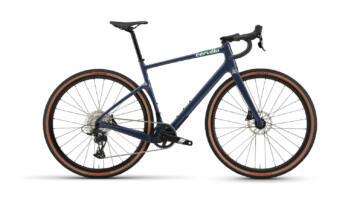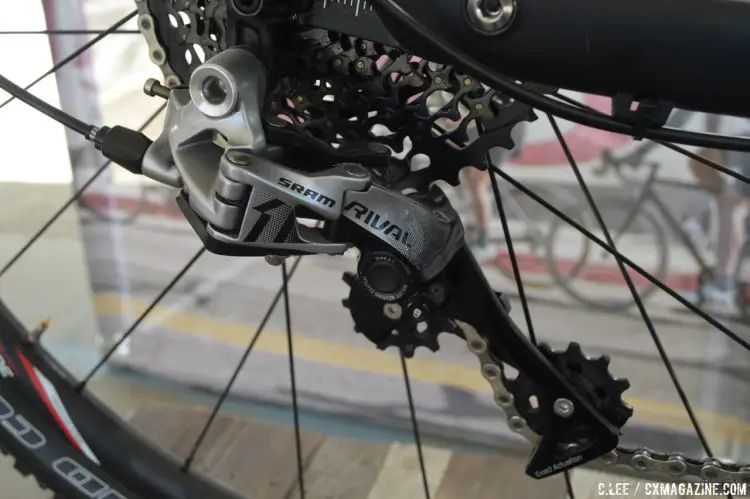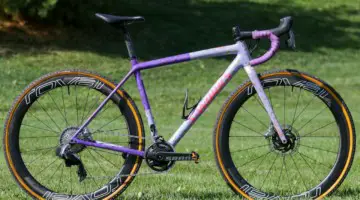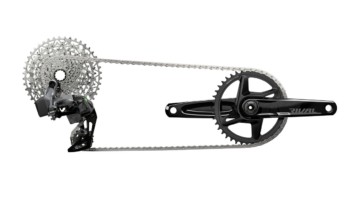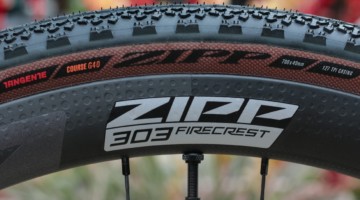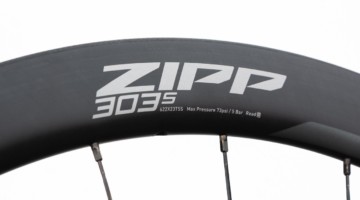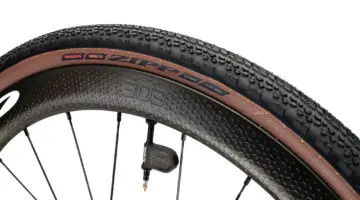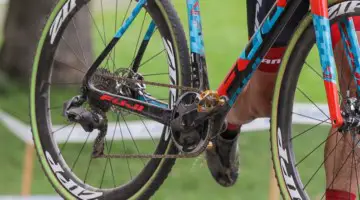Originally, mountain biking utilized three chainrings to gain a wide gear spread, but with front shifting already less than perfect for two rings, the third ring was prone to more shifting problems, not to mention ‘chain suck’ as a result of less than stellar drivetrain maintenance. When rear suspension became more popular, non-traditional frame geometry and shapes sometimes made front derailleur mounting a challenge.
Though mountain bikers addressed the problem with cobbled together single chainring setups, there were problems of chain derailment due to chain tension issues, exacerbated by the bouncing of the bike over rough terrain. SRAM seized the opportunity to improve conditions for the mountain bike by introducing XX1, a component group dedicated to the single ring setup for mountain bikes.
Riding on the success of XX1 came CX1, a component group aimed directly at the cyclocross rider. The use of the single chainring was a popular choice among cyclocross users for decades since there was little benefit of shifting between chainrings for a one hour race in poor conditions. Cyclocrossers utilized all means of chain retention including chain guides, and chainring guards, as well as adopting the mountain bike clutch rear derailleurs used to aid chain tension, such as the XX1. CX1 added the wide-narrow chainring technology of XX1 as well as a specially designed rear derailleur and a cassette for the typical cyclocross gear range. Cyclocross Magazine reviewed the CX1 component group in Issue 27.
Force1 and Rival1 Bring One for the Road
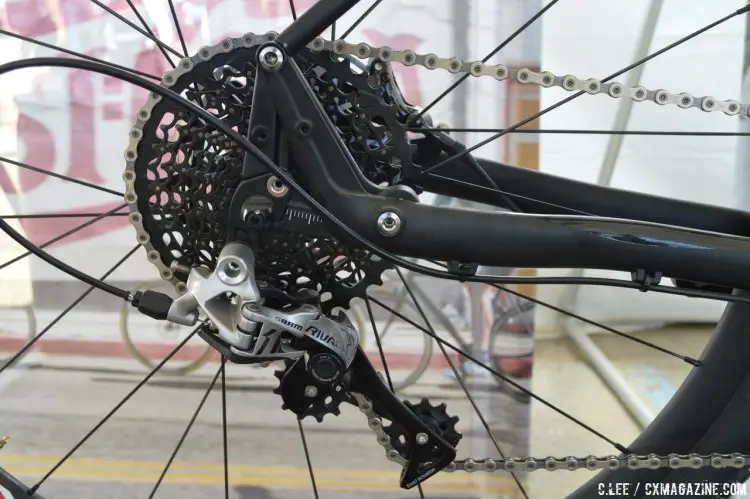
SRAM’s Rival1 long cage rear derailleur can handle the large 10-42t cassette. © Clifford Lee/Cyclocross Magazine
At the Subaru Sea Otter Classic, SRAM has taken the success of XX1 and CX1 to the masses. Though cyclocross was the obvious first target for a road type bike, SRAM has remarkable cross compatibility among components both for road and mountain, and has worked on that aspect further with the introduction of Rival1 and the renamed Force1. Based on the wide narrow chainring, the non-slant parallelogram clutch derailleur and a wide range cassette, SRAM expanded the offerings.
Wide-narrow chainrings are now available from 38 to 50 teeth in 2 tooth increments for 110 bcd cranksets at both Force1 and Rival1 levels. Also available are 52 and 54 tooth rings for 130mm bcd cranks for Force1 only.
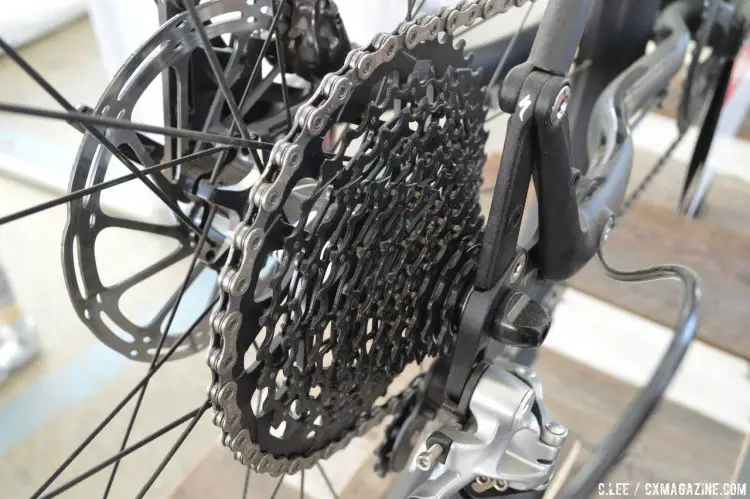
SRAM is now marketing their single chainring drivetrains toward gravel and road markets, doing away with the CX branding. © Clifford Lee/Cyclocross Magazine
Wide range 11 speed cassettes are available in 11-26, 11-28, 11-32, and 11-36, both in 1170 Force and 1130 Rival, with weight being the major difference between the levels. The long cage version of both rear derailleurs can handle SRAM’s massively wide ranged 10-42t cassette that uses an XD driver system.
Force1 has a short, medium and long cage rear derailleur depending on the planned cassette size use, while Rival has only a medium and long cage version. Weight, finish, and arguably durability, separate the Force1 derailleurs with all forged parts, compared to Rival that has some cast parts in the derailleur construction.
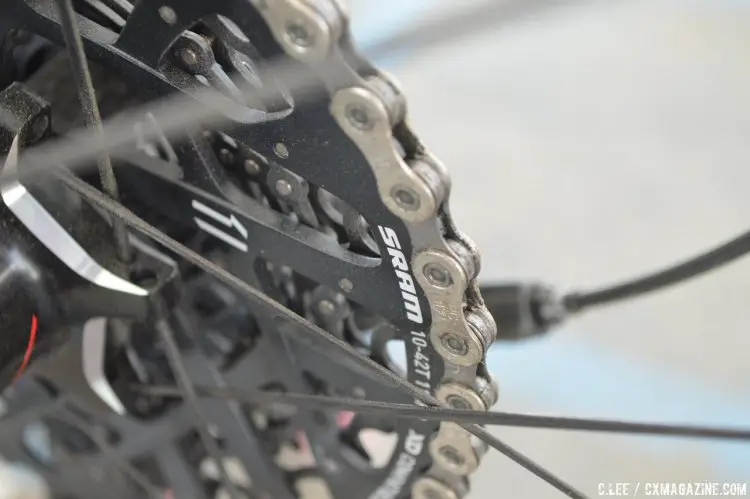
SRAM offers a comparable range with their singlering systems, although using the larger cassettes won’t mean a significant weight reduction from the double chainring system. © Clifford Lee/Cyclocross Magazine
Zipp Goes Aluminum with Course 30 Disc
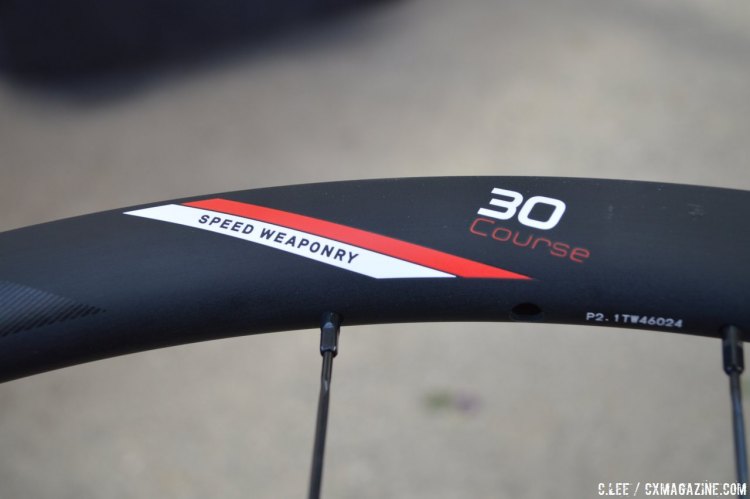
Zipp’s first aluminum rim, available in tubular and tubeless models. © Clifford Lee/Cyclocross Magazine
Finally, supporting the Force1 and Rival1 components is the new Zipp Course 30 wheelset with the new 77/177 hubset. This looks to be a versatile disc wheelset with tubeless ready 26mm deep aluminum rims that are 25mm wide with a 21mm inside width. It is also available for tubular tires with the same external rim dimensions either version is built around the 177 hub using Sapim CXray straight pull spokes. The 177 hub is easily convertible from quick release to thru-axle, either 100 X 15mm or 12mm for the front, and 142 X 12mm or 135 X 12mm for the rear.

The 26mm deep aluminum rims are 25mm wide with a 21mm inside width. © Clifford Lee/Cyclocross Magazine
Importantly, the cassette body can easily be changed to a sold-separately XD Driver so that the XX1 11-speed 10-42 cassette can be used. This special XD driver is for use only on the 177 rear hub, as the body is slightly wider-1.8mm to be exact-so that wheel does not have to be re-dished. Remember, the XD driver is on a 10-speed spacing despite its 11 cogs and the special XD driver for the 177 hub is replacing an 11-speed spaced cassette body, so a longer XD driver was made, requiring a 1.8mm spacer be put on along with the 10-42 XX or XG cassette.
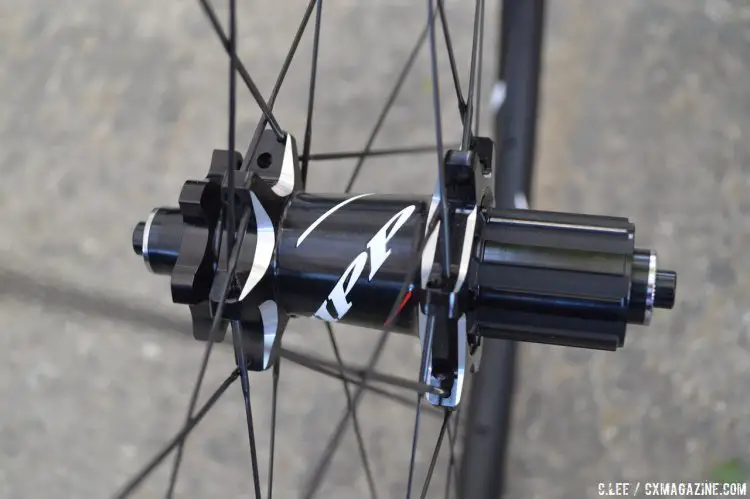
The cassette body can be exchanged with an XD Driver to employ SRAM’s larger cassette. © Clifford Lee/Cyclocross Magazine
With these offerings, there are now two component levels and enough combinations to cover the time trialist, the mountain biker and everyone in between: road racer, adventure rider, gravel grinder and cyclocrosser. A 42 tooth front ring combined with the 10-42 cassette, gives over 95% of the gear spread of a 50/34, 11-32 SRAM WiFli setup, albeit with larger steps in between. With the 22 series and now the 1 series of components, SRAM is offering more options for riders, and we can only see that as a good thing.
In Issue 28, due in your mailbox soon, we have a detailed review of Rival 22 (if you’re not a subscriber, be sure to order your backcopy). There’s a lot more to look forward to as we review the new Rival1 and Zipp Course 30 wheels in the near future.
Force1 and Rival1 Specs:
Force1 hydraulic full groupset: $1,475
Force 1 mechanical full groupset: $1,110
Right HydroR shifter: $375, 441 grams; Right mechanical brake shifter: $190, 158 grams
Left HydroR shifter: $315, 431 grams; Left mechanical brake shifter: $87, 119 grams
Rear Derailleur: $231, 261 grams
Chainring: $82-$99, 70-156 grams
Rival1 hydraulic full groupset: $1,153
Rival1 mechanical full groupset: $688
Right HydroR shifter: $355, 485 grams; Right mechanical brake shifter: $123, 169 grams
Left HydroR shifter: $284, 442 grams; Left mechanical brake shifter: $155, 130 grams
Rear Derailleur: $120, 267 grams
Chainring: $89, 72-147 grams











